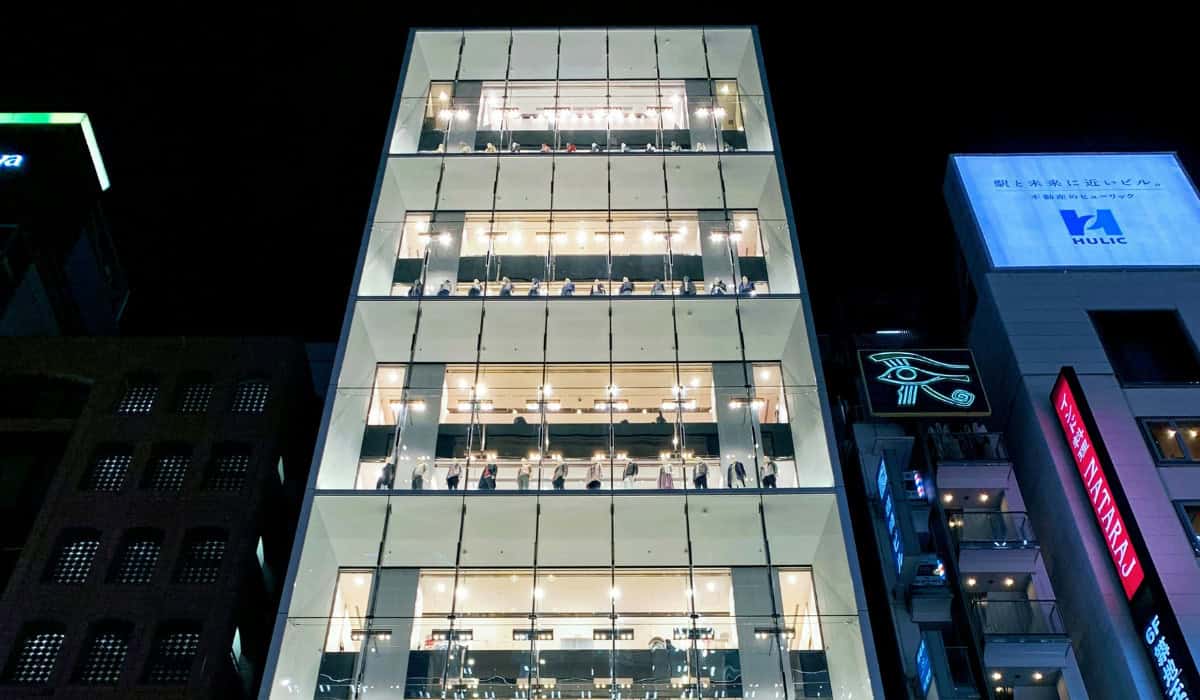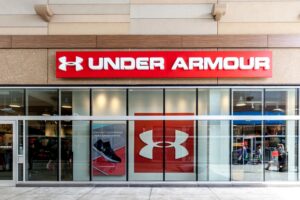
Photo by John Cameron on Unsplash
June 3, 2024
Are Flagship Stores Necessary for Retail Brands?
The concept of flagship stores traces back to the late 19th century, epitomized by grandiose structures like New York’s Steinway Hall. Over time, flagship stores became synonymous with luxury, innovation, and brand identity. With their imposing size and strategic locations in prominent global cities, these establishments transcended mere retail outlets, evolving into cultural landmarks and tourist attractions.
Flagship stores stand out for their size, location, customer service, and overarching purpose. They typically offer immersive experiences, personalized service, and deeper connections between consumers and brands.
One example of a new flagship store is Seiko Watch Corporation’s “Grand Seiko Flagship Boutique” at 540 Madison Ave. in New York City, which opened earlier this year. This is the largest Grand Seiko Boutique globally, aiming to capture a larger share of the North American luxury watch market. It strategically targets Manhattan’s affluent buyers to boost the brand’s visibility. This follows the success of the European flagship in Place Vendôme, Paris, reinforcing the luxury image.
On Monday, Banana Republic, a fashion label under the umbrella of Gap Inc., announced a grand opening of its revamped flagship store in the heart of New York City’s SoHo Cast Iron Historic District. Situated at 552 Broadway between Prince and Spring Streets, this newly redesigned space marks a significant milestone for the brand, signaling an attempt to start a fresh chapter in its legacy of style and sophistication.
Collaborating with architect and interior designer Noa Santos of NAINOA and creative advisor Jacqueline Schnabel, Banana Republic has transformed its SoHo outpost into a premium destination of fashion, art, and lifestyle. The store’s architecture serves as a canvas, enveloping visitors in an immersive environment, and the design incorporates materials like travertine, brass, and Venetian plaster. Artwork from established and emerging artists, including Mexico-based Angela Damman, enhances the space.
Spanning two stories and 17,000 square feet, the store boasts a curated selection of Banana Republic’s women’s and men’s ready-to-wear collections, alongside a new addition: BR Home, featuring “furniture, lighting, and other home goods,” according to the press release. From sustainably sourced cashmere to exclusive vintage pieces from the Banana Republic archives, shoppers are treated to a diverse array of high-quality offerings.
Enhancing the shopping experience, premier services such as custom tailoring and personalized concierge and styling services are offered. The store’s ambiance features a cultural fusion with art installations, sculptures, books, and decor, inviting engagement with Banana Republic’s narrative.
Furthermore, in 2021, the LEGO Group launched an innovative “retailtainment” concept at its flagship store on Fifth Avenue in New York City. The 7,175-square-foot store blends digital and physical experiences to inspire creativity.
Key features of the NYC LEGO flagship store include:
- Brick Lab: An immersive, bookable experience that brings LEGO builds to life in a digital world with interactive content.
- Tree of Discovery: A centerpiece made from 880,000 LEGO bricks with hidden details, symbolizing LEGO’s positive impact on society and the environment.
- Personalization Studio: Offers Mosaic Maker for personalized LEGO mosaic portraits and the Minifigure Factory for creating unique LEGO Minifigures.
- LEGO Expressions: Interactive feature where LEGO Minifigures mimic visitors’ facial expressions.
- Storytelling Table: Area to learn about the LEGO design process through videos and interact with displayed LEGO sets.
- Exclusive NYC-Inspired Models: Larger-than-life models inspired by New York scenes, including Marvel Super Heroes and a talking Statue of Liberty Minifigure.
The LEGO store format is modular and scalable, designed to enhance brand experiences in both LEGO and partner stores, complementing LEGO’s strong online presence.
Finally, in 2019, Apple redesigned its Apple Fifth Avenue store in New York City. This iconic location, featuring its distinctive glass cube, is nearly double its original size, with higher ceilings and more natural light. The store includes a new forum for free daily “Today at Apple” sessions and a doubled Genius Bar, and it’s the only Apple retail location that’s open 24/7.
The redesigned plaza has 28 honey locust trees and linear fountains, while the store below boasts 18 Skylenses and 62 skylights. Visitors enter via a new stainless steel spiral staircase or a circular elevator. Staffed by 900 employees speaking over 30 languages, the store offers personalized services and a unique shopping experience.
Looking ahead, flagship stores should embrace experiential marketing, integrate physical and digital channels, and redefine performance metrics. By prioritizing brand-building initiatives, retailers can help ensure the continued relevance and success of their flagship locations.
Discussion Questions
Given the historical and cultural impact of stores like Steinway Hall and Apple Fifth Avenue, can flagship stores extend beyond luxury brands in major cities to serve as key brand experiences in smaller cities and for non-luxury brands?
What strategies and adjustments are needed for this adaptation?
What key metrics should be used to evaluate the success of flagship stores like Banana Republic, Seiko, Apple, and LEGO beyond traditional sales figures?
Poll
BrainTrust
Gene Detroyer
Professor, International Business, Guizhou University of Finance & Economics and University of Sanya, China.
Allison McCabe
Director Retail Technology, enVista
Pamela Kaplan
Principal, PK Consulting
Recent Discussions







It very much depends what the purpose of a flagship is. If it’s for marketing and brand building purposes as well as generating sales, then there is a reason to having a flagship in a prime location. If it’s purely commercial then there are likely cheaper options and locations that will generate a better return. The margins of the company also play a role. Luxury has higher margins so can support flagships; mainstream brands, not so much. What no brand should do is open flagships purely for the purposes of vanity.
I totally agree with Neil Saunders assessment. Coming from 20 years in luxury, flagship stores are a necessity and very much used for marketing and brand awareness and location is critical. With the great locations comes very high rent, buildout costs, as well as events costs to support the marketing. Ideally the flagships should breakeven, but realistically they don’t but support the region’s profits and should be looked at it as such
“The concept of a flagship store traces back….” to when stores began to open branches; it’s really that simple, and I don’t think much thought was ever given to it until brands began to corrupt the phrase by calling many – far, far, too many – of their stores “flagships”. So while a flagship certainly isn’t necessary – is there a flagship Target? Safeway? – it might have some value…assuming something is done to really make it stand out (which pretty much mandates that the brand itself has to standout first). The idea that Banana Republic gains something by making one of its hundreds of unremarkable stores a little different stretches the term past the breaking point.
Since the emergence of digital commerce, and later, the pandemic, almost everything in the retail world has changed, evolved, and transformed. As a result, many traditions are no longer relevant.
Flagship stores are one such tradition. A flagship store has no negatives, but it is entirely unnecessary.
As well, with nearly every retailer having presence in multiple cities, flagships are less relevant today than they were during the golden age of retail.
The exception is when a retail company makes one store a tourist attraction. It serves a different and more unique purpose in this case. -Db
It’s ironic that this article is about flagship stores in New York City, but does not mention the retail mothership, Macy’s Herald Square. Because that’s what comes to mind whenever I imagine a flagship store.
Flagships don’t always have to be huge, grand spaces, sometimes they are just the first store of many to be opened. And no, I don’t think every retailer needs an architectural masterpiece, but it’s nice when they do.
Ironic , but not without reason, as Macy*s was slow to play the branch game (tho in a sign of things-to-come, they were early in acquiring other nameplates) By contrast, I believe a certain midwest retailer had a whole flotilla of outlets filling up Chicagoland while the Charleston was still being practiced. Name’s right on the tip of my tongue..last name starts with an “F” 🙂
And, oh what a flagship Mr. Field created on Chicago’s State Street. It’s one of my favorite places to get lost.
I AM So Glad that it IS STILL there, however, in it’s current diminished size and scope, it is Most Definitely NOT what it once was!
Beyond traditional sales figures, retailers can use metrics like store foot traffic and dwell time to evaluate the success of flagship stores. The results may reveal insights that could optimize store layout, promotion and assortment strategies.
It seems the definition of flagship store has morphed and broadened a bit, depending on the retailer. Some retailers claim to have multiple flagship stores if they are a bit larger with an extended, likely more upscale, assortment. I think in addition to luxury, if the brand can have a unique experiential concept, such as LEGO, it can certainly leverage the additional space and costs associated with the flagship store. Further, with more consumers spending money in different cities, it makes sense for retailers and brands to find location opportunities outside of New York, London, and Paris.
“Retailtainment” should be an element of every store, not only the flagship. Visual crispness, merchandise excitement and energetic customer interaction should be the rule not the exception. Those were the expectations when department stores were “a thing”. Need to find a way to create that in a refreshed way. Flagship stores are terrific test environments and should be used not only to market the brand but enliven it.
As Dennis rightly describes, “Flagship stores stand out for their size, location, customer service, and overarching purpose. They typically offer immersive experiences, personalized service, and deeper connections between consumers and brands.” Anything else is the bastardization of the concept that far too many retailers glob onto.
The flagship store is a marketing and brand tool. If the retailers are looking for profitability they is looking in the wrong place. Put it in the marketing budget. The measure of success is simply traffic. Apple’s Fifth Avenue store is an exception. It is geared to serve locals as well as promote the latest and greatest to tourists. Maybe there is a reason they picked a location two blocks north of the tourist highway, 42nd street to 57th street.
Flagships are not destinations for Manhattanites. There are a few exceptions, like the Samsung Experience and the Tesla flagship, both in the Meatpacking District, a destination for New Yorkers. In this case, flagships aren’t just for luxury. We can add in sneakers brands, as well.
I love a good flagship. Brick and Mortar stores are critical for customer acquisition, brand definition and shopper engagement. Flagships serve a key purpose of expressing the full scope of both a brand’s innovation and assortment. They also create unique destinations for loyal and new customers. Metrics for flagships are challenging and will vary by location and business goal. Overall, however, a certain % of expenses do need to be distributed or written off as marketing to even the playing field. Some key measures of success should include: traffic count, acquistion/new to file, and editorial value.
The golden age of department stores, going back decades, was all about the experience and multi-sensory journey. Flagship department stores were a must-see destination whenever you visited NYC, Chicago, London, Paris, etc. Every single vendor had to have a presence in the store, and Macy’s, for example, had several events at the Herald Square location, including the annual flower show that everyone had to check out.
Unfortunately, scaling out the experiences that a flagship department store offered across the country was very challenging. This is especially true as all of the local department store competitors were acquired by Macy’s, and they lost their regional identity and what made them authentic.
The same could be said for the flagship locations of iconic global brands, including Nike, Adidas, and others. Their flagships are a form of media connecting consumers and serving as an experiential extension of the brand. With that said Nike’s House of Innovation is also challenging to replicate at scale across the country.
Considering the significant costs to serve and capital investments required to establish and maintain a flagship location, retailers and brands should be very strategic and purpose-driven.
The flagship store should be an all-round emblem of for what a brand stands and is meant to be. Hence, flagships are more appropriate to luxury/upscale brands and should be intended to market the brand and wow the customers or visitors, even if they don’t buy, which only higher-price brands can afford. One case in point; the Ralph Lauren in the Rhinelander mansion at the corner of Madison Avenue and 72nd Street in New York. It’s like walking into a Ralph Lauren Museum/Showroom. It tells the Ralph Lauren story and lifestyle.
Flagships aren’t necessary for most brands but are certainly nice to have for many. Multi-format is now the rule rather than the exception and flagships are a great way for brands to take control of customer experience, own the brand narrative, and increasingly, showcase the latest in-store technology. For some direct-to-consumer brands, investing in a limited number of flagship locations makes more sense than remaining digital-only.
Flagships make the brand real, in every sense. Product. Presentation. Service. Storytelling. Experience. Sure, the architecture and ambiance are part of it, but it doesn’t have to be about massive square footage in the middle of a big city. The full brand story deserves to be told everywhere, but the economics will drive the scale of that story telling.
Maybe the next generation mall will be the next generation flagship. Of course, individual brand stories still need to be told, but the synergies available to make a great shopping experience are certainly available in a mall environment. Very few brands can even think about offering what we used to define as a flagship experience. But lots of malls have the opportunity to offer flagship experiences to their surrounding areas. Shopping. Great food. Entertainment. Social interaction. It all adds up.
Flagship stores are always interesting and almost always in Manhattan. So, with the vast majority of American NOT living in or regularly visiting Manhattan, these buildings have a limited effect on the general public. That is not to limit their importance-if the Flagship Tiffany’s store closed-THAT would be a big deal.
But the actual impact on day to day sales and branding? Minimum.
Flagship stores serve crucial marketing and brand-building purposes, especially for luxury brands with higher margins. While not essential for all brands, Flagship stores does enhance visibility and regional profitability despite high costs. Their strategic locations amplify brand presence and customer engagement, making flagships valuable for both marketing and sales objectives.
The heyday of flagship stores is on its way out. Retailtaiment is becoming more commonplace, now found at local malls. Online exclusives have replaced the treasure hunt of wandering through an 80K sf flagship store. And with ever-shrinking retail margins, whether related to inflation, competition, or logistics costs, I can’t imagine a real estate department willingly approving the low ROI associated with these deals.
Flagship stores can deliver value in multiple ways. They can create brand prestige among both employees and shoppers. They can offer employees an aspirational career opportunity; being “called up” to the flagship. They can act as a lab and be a source of product and experiential testing.
If you have built a large enough brand and have a product margin to support a flagship store, you should operate one. Not for vanity, but for the practical business benefits.
To keep a flagship location from being a loss leader, it needs to be located in a high-density area. Thus Manhattan as flagship store central along with other larger global markets. As noted in other comments, flagships are not targeting locals so you shouldn’t need a lot of regional flagship copies to learn what works with a general group of shoppers. Your flagship will likely be biased toward brand loyal shoppers, but they’re the ones doing the majority of spending.
In my opinion, flagship stores can definitely extend beyond luxury brands and major cities to serve as key brand experiences in smaller cities and for non-luxury brands. The key is to focus on creating unique, immersive experiences that connect emotionally with customers.
For this adaptation, brands should consider local culture and preferences, use interactive technologies, and provide personalized services. Engaging the community with events and partnerships can also be beneficial.
As for evaluating the success of flagship stores, brands should look beyond traditional sales figures and consider metrics like customer engagement, social media impact, foot traffic, and customer feedback. These metrics provide a broader view of how well the flagship store is building brand loyalty and creating memorable experiences for customers.